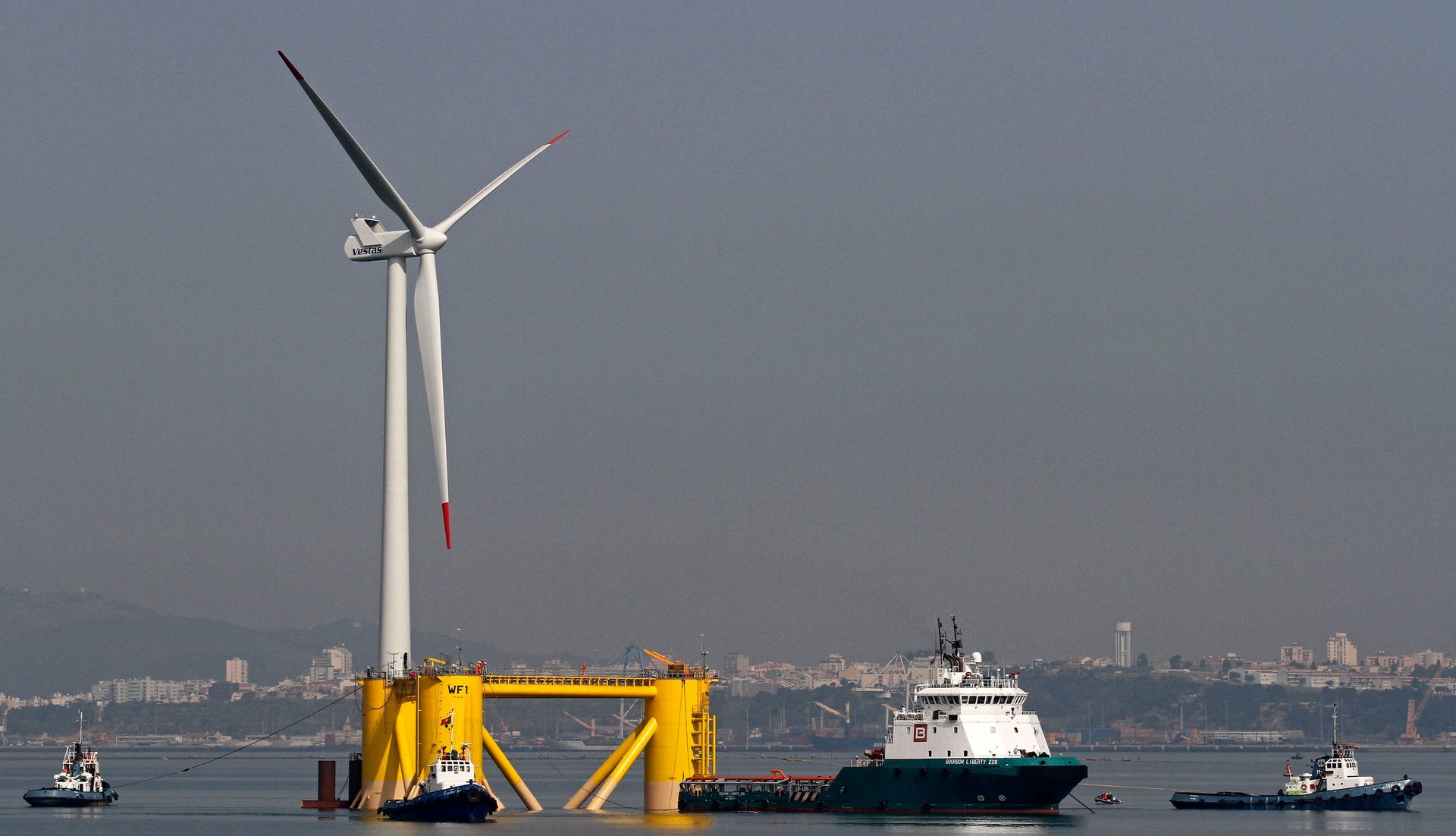The future of wind energy is floating turbines on the ocean
Towering wind turbines already speckle seas across Europe and Asia and a boom in construction is expected to bring an economic bonanza to the US East Coast. But even this climate-friendly technology could soon evolve into something bigger and better. Almost all the offshore wind turbines operating right now stand atop towers driven into sea beds. As the industry looks to push its turbines into deeper waters, technology is being developed so that wind farming can float.


Towering wind turbines already speckle seas across Europe and Asia and a boom in construction is expected to bring an economic bonanza to the US East Coast. But even this climate-friendly technology could soon evolve into something bigger and better. Almost all the offshore wind turbines operating right now stand atop towers driven into sea beds. As the industry looks to push its turbines into deeper waters, technology is being developed so that wind farming can float.
Why do we need floating wind farms?
Floating turbines could be deployed in deeper waters further offshore. There, winds are stronger and more consistent. “You get more energy output when you have these higher wind speeds,” said Stephanie McClellan, an industry consultant and founder of the Special Initiative on Offshore Wind, a Delaware-based project designed to spur offshore wind energy development. Fewer species of birds can be harmed by the spinning blades. The infrastructure would create fewer conflicts with fishermen and other users of the oceans. They can be out of sight from the shore.
Three types of floating wind turbine designs
Currently, there are three types of floating wind energy structures that serve as a basis for how farms could be built.
Spar Buoy
Already being commercially used off the coast of Scotland, the Spar Buoy is the most commonly thought of structure for a floating wind turbine. It is anchored by a ballast underneath that keeps the turbine afloat. However the ballast is huge, heavy, and hard to test in water shallower than 100 m. This is because the mooring lines act as shock absorbers against waves, the longer the mooring lines, the better they keep the turbine upright.
Tension Leg Platform
This structure uses taut mooring lines connected to piles in the seafloor. It creates a very stable platform for the turbine. Though, if one leg loses tension, the whole structure will tip over. Adding additional legs or lines to the design may lower this risk.
Semi-Submersible
This structure uses the area near the surface to achieve stability. The drawback is it takes up more sea area. Its modular design allows it to be more easily transported from ports in shallower waters.
Combining features from different floating wind platforms
Experiments for future turbines combine these types into hybrid structures that could be manufactured remotely and installed in fewer parts. For instance, could a Tension Leg Platform be easier to install if it was combined with a Semi-Submersible? A leader in this endeavor is Henrik Stiesdal the former CTO of Siemens. He used tubular steel components to create a kind of Semi-Submersible Spar Buoy. The modular layout allows for most of the turbine to be built off-site and then towed out to sea.
Offshore wind design and technology is still emerging with new kinds of structures. “I think this is going to be more common as we go forward,” said Walter Musial, a principal engineer that leads the offshore wind research platform at NREL. “It’s like a Transformer. You tow it out to the station and then you can drop a ballast weight down and it’s deployed in a stable position at site. But all the assembly and commissioning has already taken place in the harbor.”
Where would floating wind turbines be installed?
Floating turbines would be needed to harvest offshore wind energy from the US West Coast, where the Pacific Ocean drops quickly to a depth that makes fixed-tower turbine technology unfeasible. Same goes for other locations in the nation including Hawaii and the Gulf of Maine.
When will floating wind farms become widespread?
The only floating wind farm generating meaningful amounts of electricity is Hywind Scotland, developed by Equinor in 2017. The nascent state of the technology means a variety of different construction styles are still being investigated. California and the federal government are soon to offer leases for wind farms at two Pacific Ocean sites where floating turbines would be needed. “We have to get started,” McClellan said “That’s what’s really promising about what’s happening in California. As we start to get these deployed, then we start to learn a lot more.”
This story was produced through a collaboration with Climate Central, a non-advocacy science and news group.